The Drepung Monastery represents the beauty and long-running perseverance of Tibet history and spirituality. This spot is a living narration of faith and history, where the present and past mix perfectly. Amongst the “Great Three” Gelug monasteries, along with Ganden and Sera, the Drepung Monastery carries a profound spiritual significance for Tibetan Buddhism. When you walk through its courtyards, you will get to the soft chants. You will also witness the monks performing their regular routines and catch the light smell of incense. Visiting this stunning monastery is about connecting with the core of Tibetan spirituality and culture.
Quick Details About Drepung Monastery
Drepung Monastery Address: Drepung Monastery, Gambo Utse Mountain, Chengguan District, Lhasa, Tibet, China
Timings: 9 AM – 5 PM daily
Nearest Airport: Lhasa Gonggar Airport
Nearest Railway Station: Qinghai-Tibet Railway
Best Time To Visit: May to October
Main Attractions: Coqen Hall, Ganden Palace, Tsokchen Hal, Kangyur Lhakhang
About Drepung Monastery
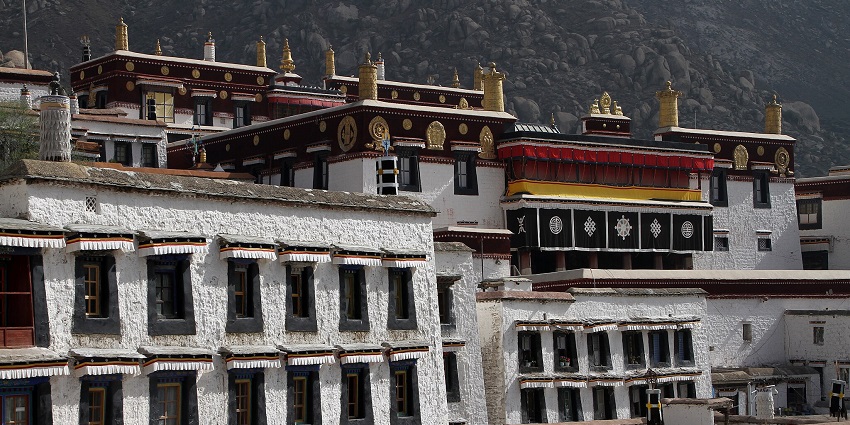
Photo: Gerd Eichmann / Wikimedia Commons
Founded way back in 1416 by Jamyang Choje, the Drepung Monastery used to be the largest in Tibet, housing more than 10,000 students. The Drepung Monastery Lhasa was not just a religious spot but also a hub of political influence and learning. The Dalai Lamas used to reside there right before they shifted to the Potala Palace. For many centuries, the monastery was a site for pilgrimage where the general public and monks would come together to follow and study all the Buddhist teachings. These days, the monastery still stands out as the symbol of spiritual dedication and Tibetan culture. It lures many sightseers across the globe and lets them witness its heritage.
Suggested Read: Places To Visit In China That Needs To Be In On Your List
How To Reach
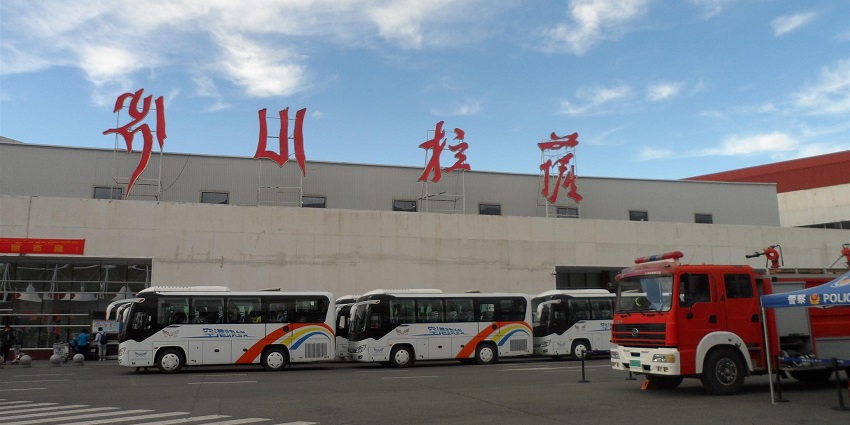
The Drepung Monastery in China is visited by countless pilgrims and even tourists. You can also easily get to the monastery. Here are the ways to do so:
By Air: The Lhasa Gonggar Airport is the closest airport to the monastery. Once you land, you can opt for a pre-booked shuttle or take a taxi. During the journey, you will get to see the breathtaking vistas of Lhasa and also the Brahmaputra River.
By Rail: The Lhasa Railway Station is the nearest railway station to Drepung, 11 km away. Since it’s a part of the Qinghai-Tibet Railway, you will get to see some great sights of the Tibetan Plateau. From the station, you can take a local bus or taxi to reach the monastery.
By Road: Getting to Drepung via road is easy. Lhasa has an excellent road network, and you can reach the monastery through a tour bus or a local taxi from the city centre.
Things To Do
Apart from offering a calm setting, you can do certain things in Drepung Monastery that will make your visit to this site an unforgettable one:
1. Explore The Halls And Temples
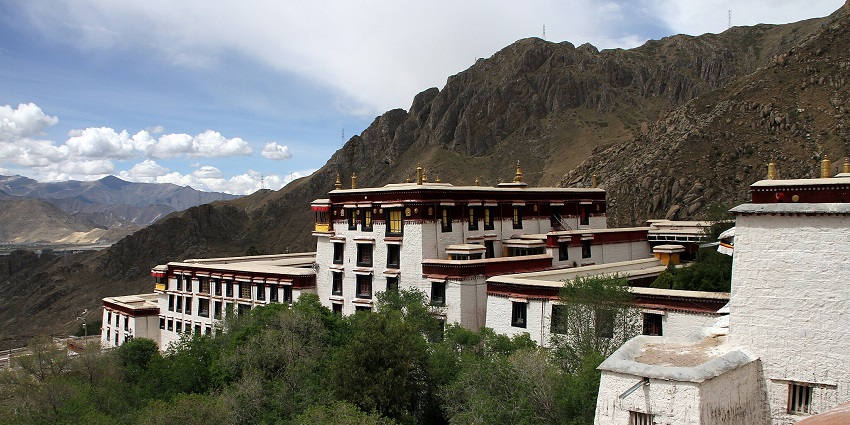
Photo: Gerd Eichmann / Wikimedia Commons
When you walk through the halls of this monastery, you will find the figures of Buddha. Each of them is created to capture wisdom and peace. You will also find multi-coloured murals that cover the walls, conveying the sagas of Tibetan Buddhism. Every hall of this monastery holds a profound spiritual presence and will make you feel the energy and history which fills this holy site. You should take a moment to experience the devotion and peace expressed in all the rooms. It will connect you with something that is way beyond yourself.
Suggested Read: Places To Visit In Macau
2. Attend The Morning Prayer Sessions
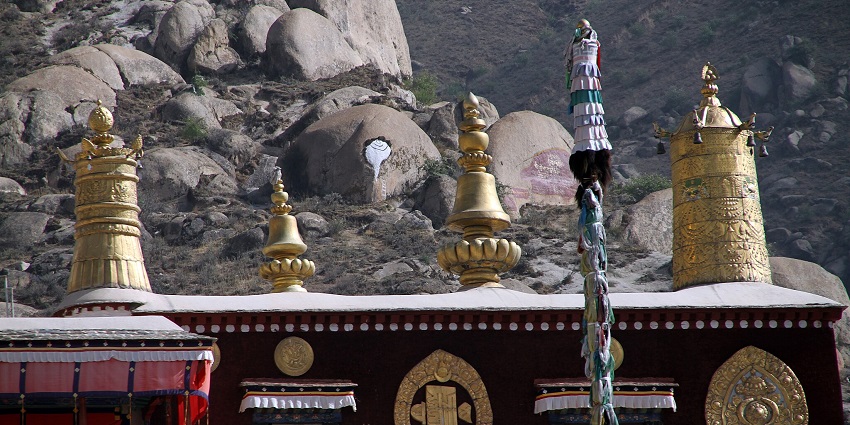
Photo: Gerd Eichmann / Wikimedia Commons
At the Drepung Monastery, every morning is magical. It’s because the monks come together to offer prayers, which fills the air with resonant and rhythmic sounds. You will also get the chance to witness the sunrise, which spills over the cliffs as the chants start to rise. This forms a sense of serenity that cannot be described in words. The morning prayers make you stop everything, reflect and feel connected deeply to the spiritual setting.
3. Engage With Monks
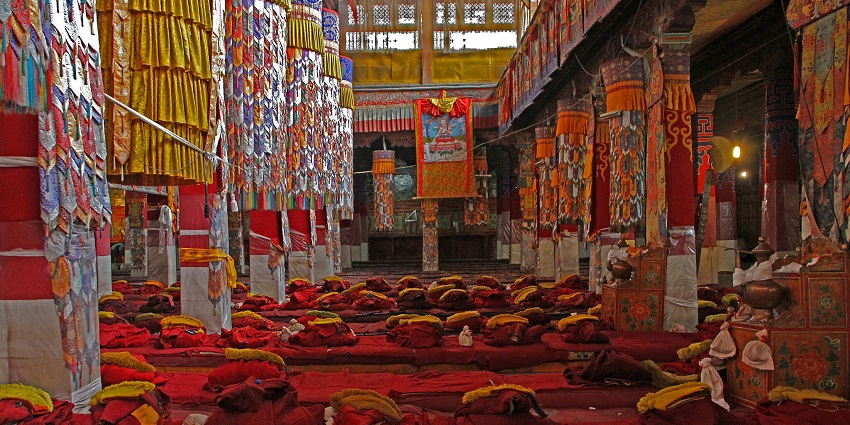
Photo: Gerd Eichmann / Wikimedia Commons
When exploring the monastery, you will certainly get the opportunity to speak with the monks. Their calm and kind presence will surely leave a lasting impression. They’re extremely generous with their wisdom and will provide you with their views on Tibetan Buddhism and life. All moments will let you see the monastery as a historical place. It is also as a living society that is filled with shared knowledge, kindness and even insight.
Suggested Read: Things To Do In China
4. Take Part In The Shoton Festival
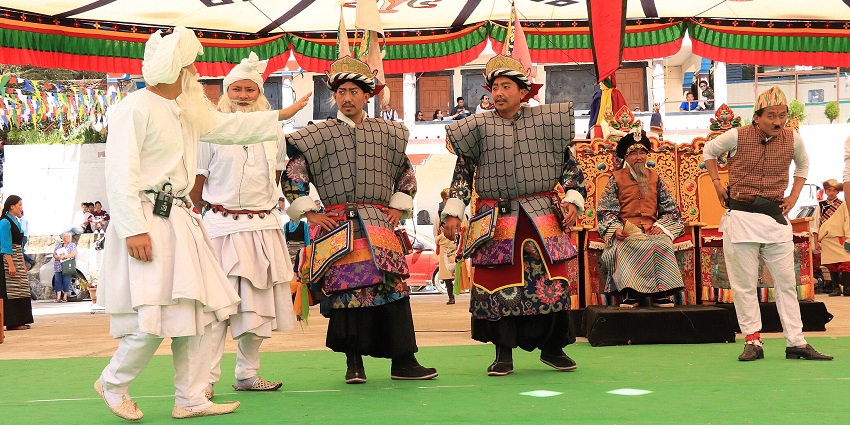
Photo: Teamtipanetwork / Wikimedia Commons / Image For Representation Only
Visiting Drepung during August will let you partake in the “Yogurt Festival” or the “Shoton Festival”. In this event, all the locals and monks come together and honour Tibetan Buddhism and culture. Colour and massive tapestries or “Thangkas” get unfurled outside, and the Tibetan opera makes the celebration more lively with its unique music. The whole space is filled with joyous meetings, pilgrims and even sightseers, making this an extraordinary experience.
Places To Visit Near Drepung Monastery
Apart from exploring and admiring the Drepung Monastery, these are some among the several places of interest that you should check out:
1. Sera Monastery
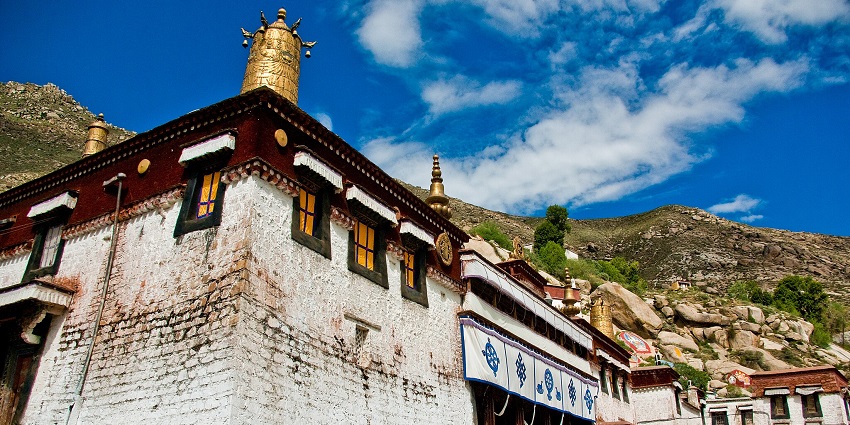
Photo: Antoine Taveneaux / Wikimedia Commons
Known for its lively debate sessions, the Sera Monastery has monks passionately discussing Buddhist teachings. Along with the debates, you will hear the monks clapping loudly to make their points clear. This forms an energetic setting that brings the place to life. The monastery is enveloped by many colourful prayer banners, captivating murals and even detailed statues of deities. This will provide you with a profound understanding of the rich artistry and lively customs of Tibetan Buddhism.
Distance From Drepung Monastery: 2 km
Timings: 9 AM – 4 PM
Suggested Read: Things To Do In Guangzhou For A Vacation Dominated By Sky-Scrappers
2. Jokhang Temple
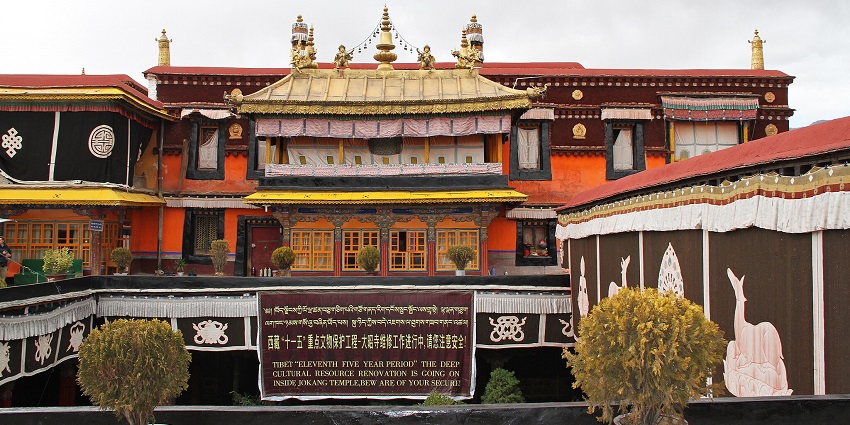
Photo: Rene Heise / Wikimedia Commons
The Jokhang Temple is known as the spiritual hub for Tibetan Buddhism. Constructed back in the 7th century by King Songsten Gampo, the temple consists of Indian, Tibetan and Nepalese architecture. Pilgrims across Tibet come to this temple to check out the “Jowo Shakyamuni”, a statue of a 12-year-old Buddha. The quiet and holy setting of the temple attracts many sightseers and offers them a sense of spiritual connection.
Distance From Drepung Monastery: 7 km
Timings: 9 AM – 6 PM
3. Norbulingka
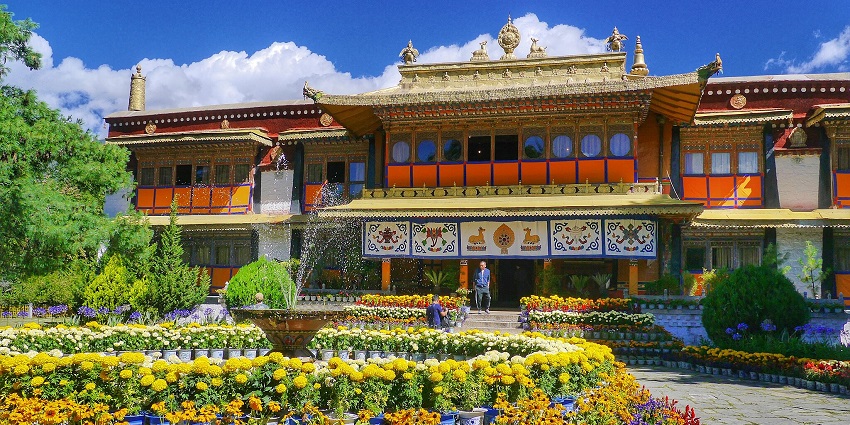
Photo: travel oriented / Wikimedia Commons
This is called the “summer palace” of the Dalai Lama. The palace’s Tibetan architecture adds a peaceful ambience, an ideal place to reflect and relax. You should also check out the stunning gazebos, envision the quiet life of the Dalai Lama and sit by the pond to enjoy the calmness. Norbulingka will provide a peaceful space for all those visitors who wish to connect with nature and meditate.
Distance From Drepung Monastery: 11.1 km
Timings: 9 AM – 5:30 PM
Suggested Read: Things To Do In Hong Kong
Where To Stay
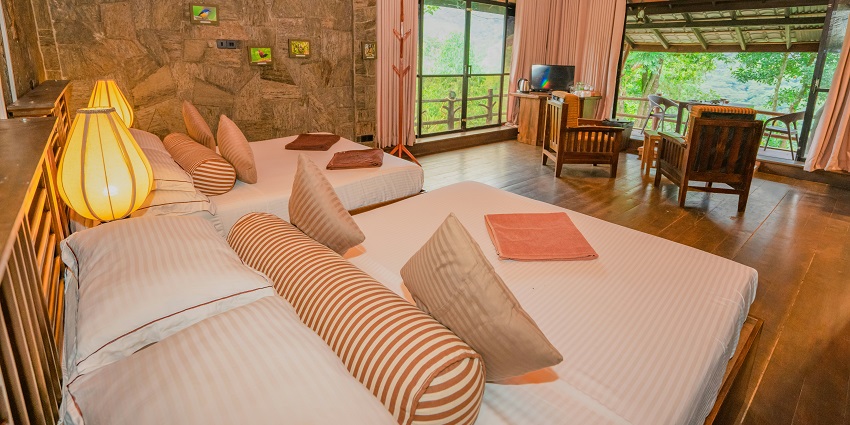
Photo: sidath vimukthi / Unsplash / Image For Representation Only
When it comes to accommodation near Sera Monastery, you’ll find a range of options to fit your preferences. Some popular choices include Honey Bee Hub Hotel, Yinqiao Hotel, Minzu Hotel, Nuobu Yaju Business Hotel and Tianyi Hotel.
Where To Eat
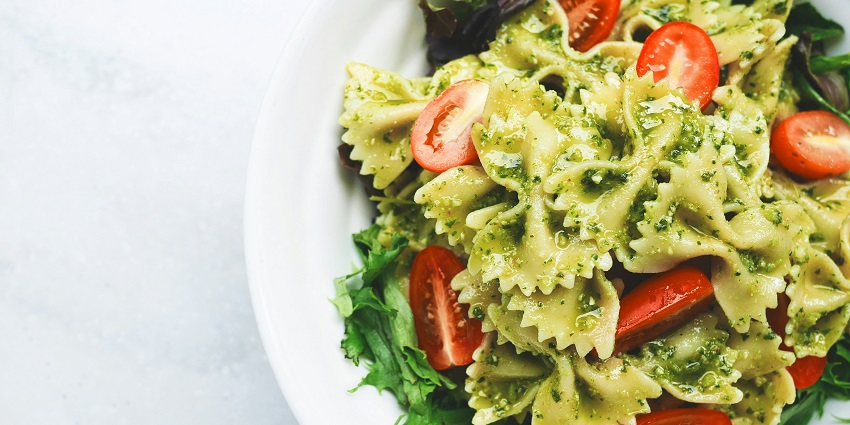
Photo: Eaters Collective / Unsplash / Image For Representation Only
Whether you’re in the mood for traditional Tibetan cuisine or international flavours, there are plenty of dining options near the monastery. Some popular spots include Hu SiChuanCai, Lao LaSa Zhou Fang, Tibet Food King Restaurant, Tibetan Family Kitchen, and YiTe LaoEr.
Tips For Travellers
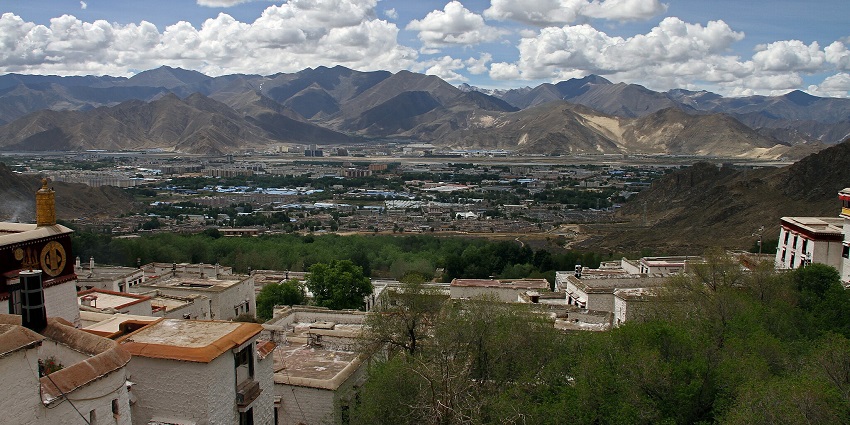
Photo: Gerd Eichmann / Wikimedia Commons
Follow the below tips to ensure a smooth trip to Drepung Monastery:
- Dress modestly, avoid loud conversations and never step on prayer mats or touch sacred objects.
- The high altitude can be dehydrating, so keep a water bottle handy.
- Give yourself a day to acclimate to Lhasa’s altitude before visiting Drepung.
- While some establishments in Lhasa accept cards, cash is preferred, especially in smaller shops and monasteries.
- Some areas within the monastery may restrict you from taking Drepung Monastery photos, so always ask if you are doubtful.
During your trip to Drepung Monastery, explore the halls of the Drepung Monastery and speak with the monks. You can also witness the vibrant community life that flourishes within its walls. This will open a new dimension of spirituality for you. Set on to explore the divine centres of Tibet here while you plan it with the experts of TripXL.
Cover Photo: Dennis G. Jarvis / Wikimedia Commons


 WhatsApp
WhatsApp
 Twitter
Twitter









